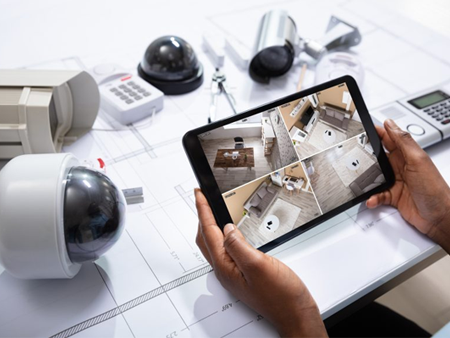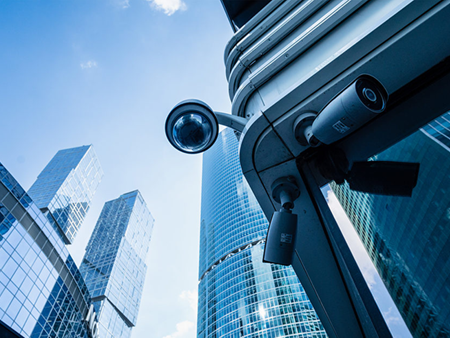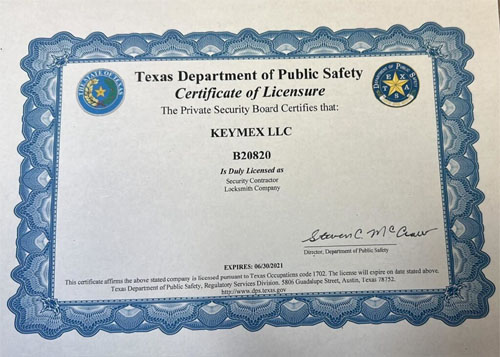Updating Security Systems in Historical Buildings

Historical buildings hold a special place in our hearts, serving as tangible links to our past and cultural heritage. From majestic castles to quaint cottages, these architectural marvels tell stories of bygone eras and reflect the craftsmanship of generations past. However, as time marches on, the need to modernize security systems in historical buildings becomes increasingly pressing. Balancing the preservation of architectural integrity with the implementation of cutting-edge security measures presents a unique challenge. In this blog, we’ll explore some essential strategies for updating security systems in historical buildings while respecting their historical significance.
-
 Conduct a Comprehensive Risk Assessment: Before embarking on any security system updates, it’s crucial to conduct a thorough risk assessment of the historical building and its surroundings. Identify potential security vulnerabilities such as weak entry points, outdated locking mechanisms, or insufficient surveillance coverage. Consider factors such as the building’s historical significance, current usage, visitor traffic, and surrounding environment.
Conduct a Comprehensive Risk Assessment: Before embarking on any security system updates, it’s crucial to conduct a thorough risk assessment of the historical building and its surroundings. Identify potential security vulnerabilities such as weak entry points, outdated locking mechanisms, or insufficient surveillance coverage. Consider factors such as the building’s historical significance, current usage, visitor traffic, and surrounding environment. - Consult with Preservation Experts: Historical buildings often come with strict preservation guidelines and regulations aimed at protecting their architectural integrity and cultural heritage. Consult with preservation experts, historians, architects, and relevant authorities to ensure that any proposed security system updates comply with preservation standards and regulations. Seek their input and expertise in developing a customized security solution that respects the building’s historical significance while addressing modern security needs.
- Preserve Architectural Features: One of the primary concerns when updating security systems in historical buildings is preserving their architectural features and aesthetic charm. Avoid alterations or modifications that could compromise the building’s historical integrity, such as drilling holes in walls, altering facades, or installing conspicuous security fixtures. Instead, opt for discreet security solutions that blend seamlessly with the building’s design and minimize visual impact.
- Utilize Non-Invasive Security Technologies: Fortunately, advancements in security technology offer a wide range of non-invasive solutions suitable for historical buildings. Explore options such as wireless security cameras, motion sensors, and smart locks that can be installed without extensive structural alterations. These technologies provide effective security coverage while minimizing disruption to the building’s original fabric.
- Integrate Security Measures Sympathetically: When updating security systems in historical buildings, strive for integration rather than imposition. Seek ways to integrate security measures sympathetically into the building’s existing infrastructure and layout. Conceal wiring and equipment where possible, utilize existing architectural features for mounting surveillance cameras or alarm systems, and select security hardware that complements the building’s style and period.
 Balance Security and Accessibility: While enhancing security is essential, it’s equally important to maintain accessibility and usability for occupants, visitors, and staff. Strike a balance between security measures and the need for convenient access, particularly in public areas such as entrances, reception areas, and common spaces. Implement access control systems that offer flexibility and convenience without compromising security.
Balance Security and Accessibility: While enhancing security is essential, it’s equally important to maintain accessibility and usability for occupants, visitors, and staff. Strike a balance between security measures and the need for convenient access, particularly in public areas such as entrances, reception areas, and common spaces. Implement access control systems that offer flexibility and convenience without compromising security.- Regular Maintenance and Monitoring: Once security systems are updated in historical buildings, diligent maintenance and monitoring are paramount to ensure their continued effectiveness. Establish a regular maintenance schedule to inspect and service security equipment, address any issues promptly, and keep abreast of emerging security threats and technological advancements. Invest in professional monitoring services to provide round-the-clock surveillance and response capabilities.
Conclusion:
updating security systems in historical buildings requires a delicate balance between preserving the past and securing the present. By conducting comprehensive risk assessments, consulting with preservation experts, preserving architectural features, utilizing non-invasive technologies, integrating security measures sympathetically, balancing security and accessibility, and prioritizing maintenance and monitoring, historical buildings can be safeguarded without compromising their historical integrity. With thoughtful planning and careful implementation, we can ensure that these architectural treasures continue to stand the test of time, protected for future generations to cherish and enjoy.

 Conduct a Comprehensive Risk Assessment: Before embarking on any security system updates, it’s crucial to conduct a thorough risk assessment of the historical building and its surroundings. Identify potential security vulnerabilities such as weak entry points, outdated locking mechanisms, or insufficient surveillance coverage. Consider factors such as the building’s historical significance, current usage, visitor traffic, and surrounding environment.
Conduct a Comprehensive Risk Assessment: Before embarking on any security system updates, it’s crucial to conduct a thorough risk assessment of the historical building and its surroundings. Identify potential security vulnerabilities such as weak entry points, outdated locking mechanisms, or insufficient surveillance coverage. Consider factors such as the building’s historical significance, current usage, visitor traffic, and surrounding environment. Balance Security and Accessibility: While enhancing security is essential, it’s equally important to maintain accessibility and usability for occupants, visitors, and staff. Strike a balance between security measures and the need for convenient access, particularly in public areas such as entrances, reception areas, and common spaces. Implement access control systems that offer flexibility and convenience without compromising security.
Balance Security and Accessibility: While enhancing security is essential, it’s equally important to maintain accessibility and usability for occupants, visitors, and staff. Strike a balance between security measures and the need for convenient access, particularly in public areas such as entrances, reception areas, and common spaces. Implement access control systems that offer flexibility and convenience without compromising security.